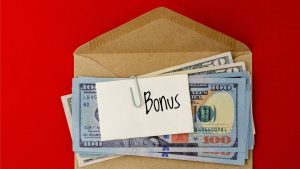A low price relative to book value used to signal a bargain. Nowadays it provides only a hint of value.
Written by Hyunsoo Rim and Segun Olakoyenikan; Edited by William Baldwin
Divide a company’s market capitalization by its shareholders’ equity and you get the price to book ratio. Equivalently, divide the share price by the book value per share.
Is the ratio less than 1? Then you are getting a bargain, in some sense. You are buying a company for less than what would be left over if all its assets were sold off at their accounting value and all the debts were repaid.
There was a time when book value was an important indicator of a corporation’s value and a significant number of stocks traded below book. Neither is true today.
And yet, price/book still gets at least a glance from analysts. Money managers who assemble “value” portfolios use it alongside other fundamentals, such as price/earnings and price/sales, to screen for cheap stocks. Also, book value is an important matter for banks, since they are required to maintain it at a certain level.
Ninety years ago, when the value guru Benjamin Graham published his seminal tome Security Analysis, book value was visible in the factories, warehouses and inventory of American business. A few years before that book came out Graham published a commentary in Forbes lamenting how many stocks were trading on the New York Stock Exchange not only below book value, but below the liquidating value of their quick assets (cash, inventories and receivables less all debts). When you bought one of these stocks you were effectively getting the property and equipment for free. This was in 1932. Stocks were indeed cheap.
Today, the average stock in the S&P 500 trades at 4.1 times book. But book value doesn’t capture the economy’s most valuable assets: software, drug patents, business networks and brands, the main exception occurring when one company buys another and records some of the purchase price as an intangible asset called goodwill. In the current market, dominated by tech and pharma titans like Apple, Microsoft and Eli Lilly, the P/B ratio becomes a less reliable metric.
Graham, who died in 1976, said that investors should aim to get stocks at prices below 1.5 times book. By 2000 Graham’s most famous disciple, Warren Buffett, was telling his shareholders that he didn’t pay much attention anymore to the ratio.
When a corporation buys in its own shares, paying more than their book value, it shrinks the book value of the remaining shares, sometimes below zero. McDonald’s, Dell Technologies and Starbucks are thriving companies with negative book value; McDonald’s even rates an A++ financial strength rating from Value Line. Home Depot’s shareholder equity is getting close to zero.
If book understates the value of a Dell or a Home Depot, it overstates others. The book value at Sears counted its decrepit stores and inventory at original price less depreciation, evidently more than they were worth. In 2013 the shares looked cheap at 1.5 times book but they later went to zero in a bankruptcy.
The tables display companies at the extremes of the P/B spectrum. (They exclude companies with a ratio above 200 or a negative book value.)
Perhaps some of the low-multiple stocks are indeed bargains, and some of the high-multiple stocks are getting ahead of themselves. But you really have to look at other measures, like the price/earnings ratio, to get a sense of value. The three car manufacturers look cheap by either measure, but even there a value investor has reason to hesitate. What is the future for gasoline-powered cars?
CHEAP PRICE/BOOK STOCKS
EXPENSIVE PRICE/BOOK STOCKS
MORE FROM FORBES
Read the full article here
















